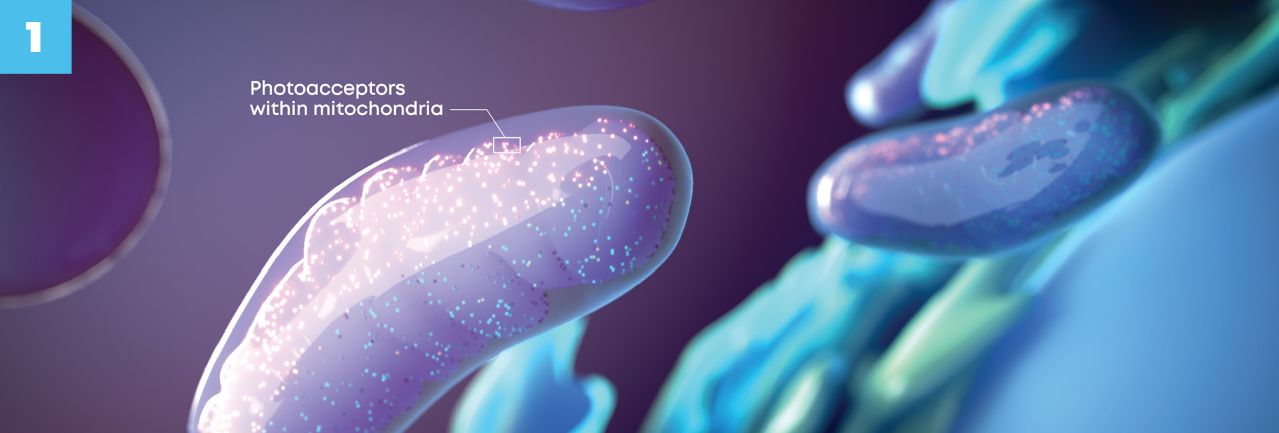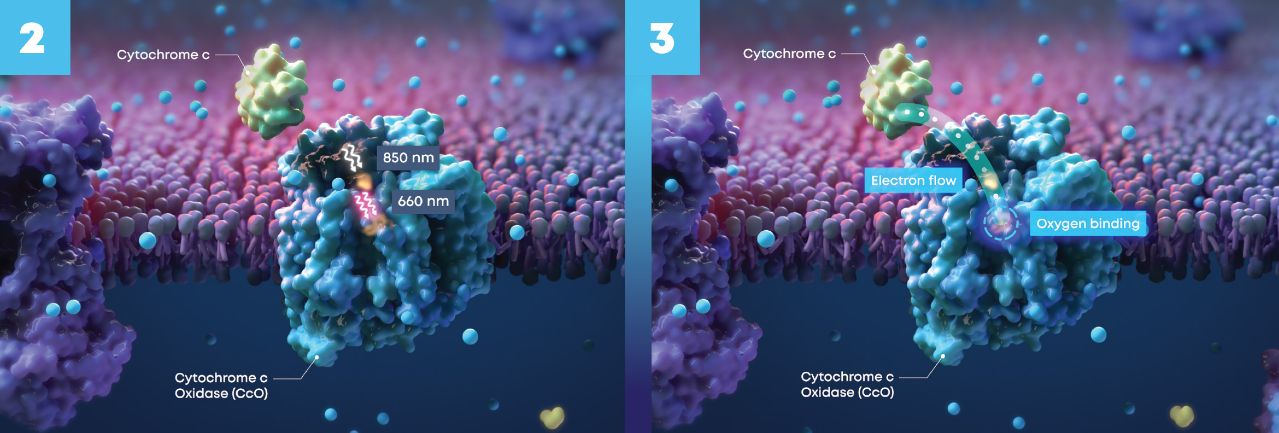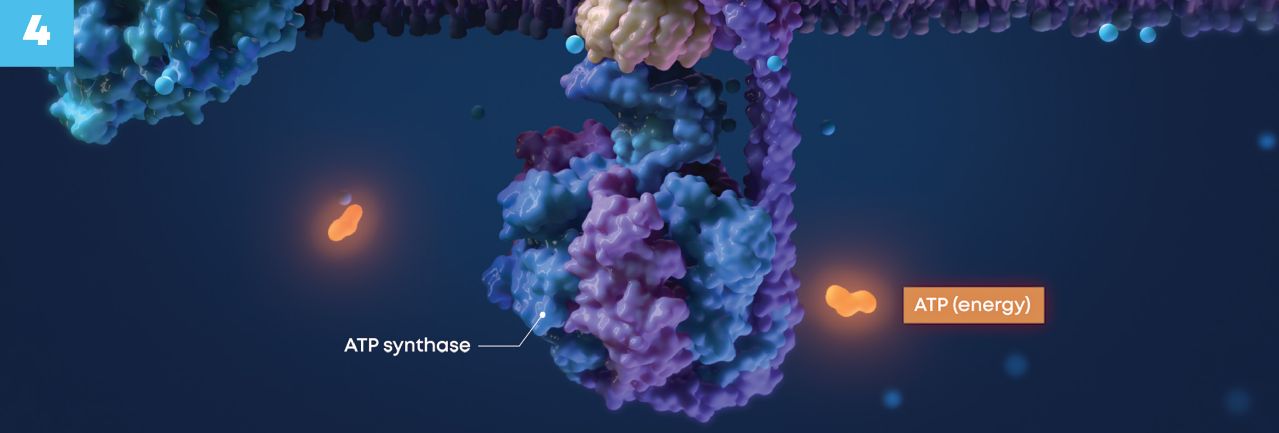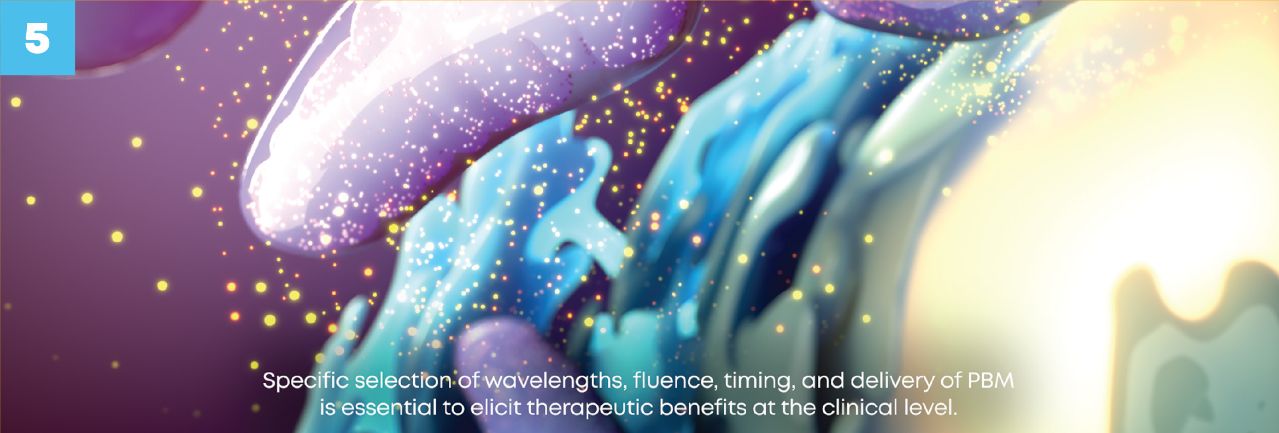Valeda Photobiomodulation (PBM) Treatment Harnesses the Power of Light to Target Disease at the Cellular Level to Improve Visual Acuity in Dry Age-Related Macular Degeneration (AMD)
Valeda delivers select wavelengths that act on cellular mechanisms important to dry AMD

PBM Activates Photoacceptors in the Mitochondrial Respiratory Chain

The specific wavelengths increase enzymatic activity at two separate sites on cytochrome c oxidase
(CcO): CuA and CuB.

Increased CcO helps drive the generation of the proton gradient required by ATP synthase to produce
energy

Restoring the production of energy and signaling molecules triggers secondary effects that sustain
improved cell function

REFERENCES:
1. Wong-Riley, M.T.T. et al., J Biol Chem. 2005; 280(6):4761-4771. 2 Ball K.A et al., J Photochem Photobiol B Biol. 2011;102(3):182-191. 3. Markowitz, S. et al., Retina. 2020; 40(8):1471-1482.
PBM MOA Support References: Begum, R. et al., PLOS One. 2013; 8(2):e57828; Fitzgerald, M. et al., Rev Neurosci. 2013; 24(2):205-226; Hamblin, M. Photochem Photobiol. 2018; 94(2): 199-212; Karu, T. et al., Lasers Surg Med. 2005; 36(4):307-314; Karu, T. Photochem Photobiol. 2008; 84(5):1091-1099; Wong-Riley, M.T.T et al., J Biol Chem. 2005; 280(6):4761-4771.
